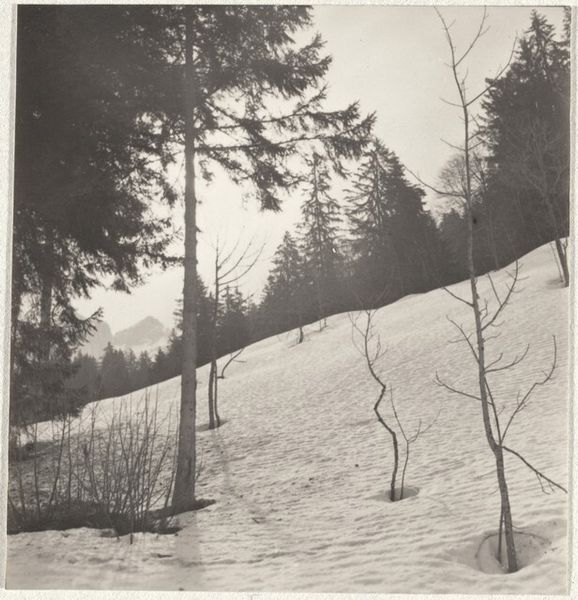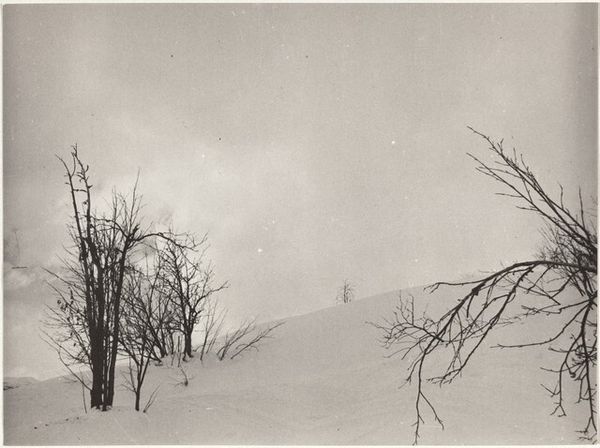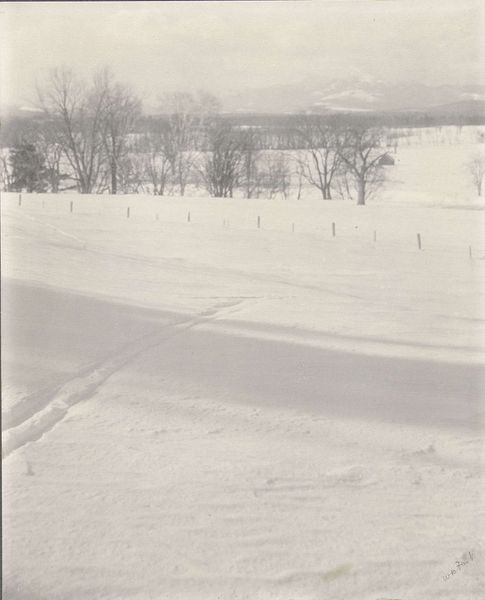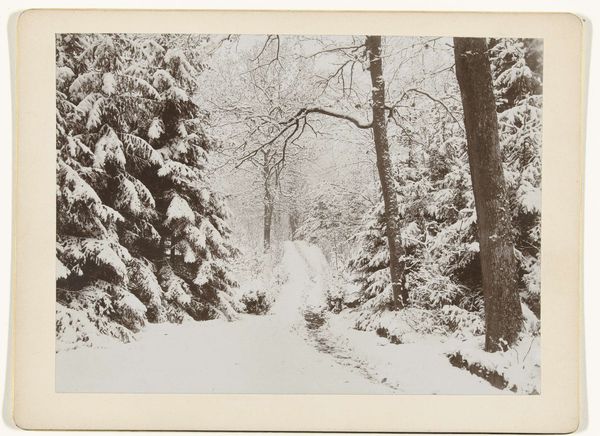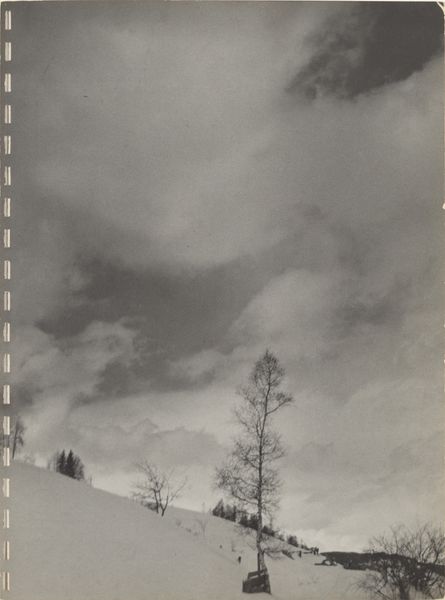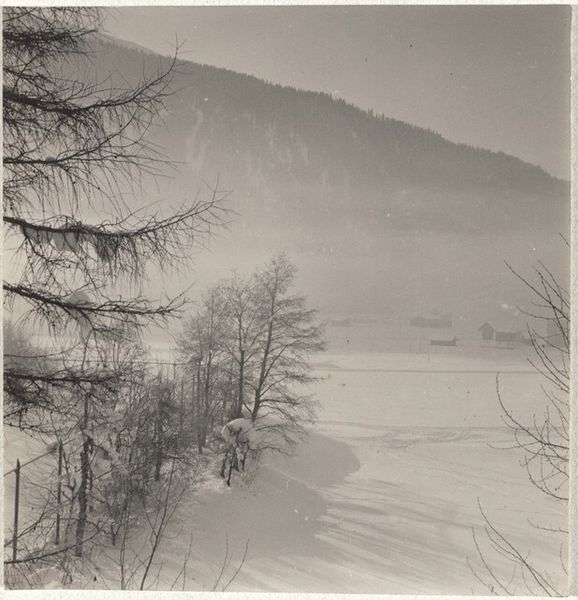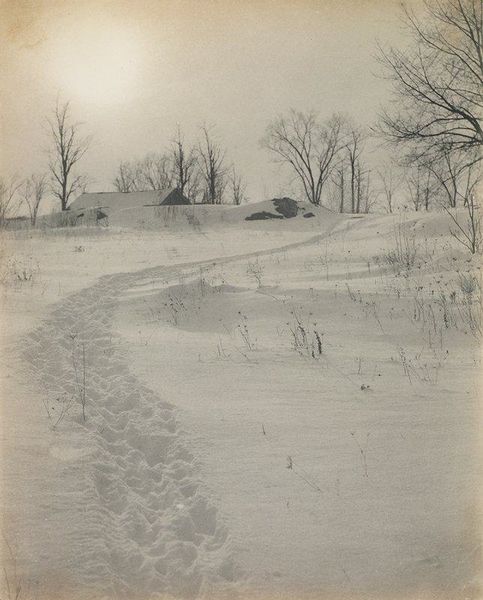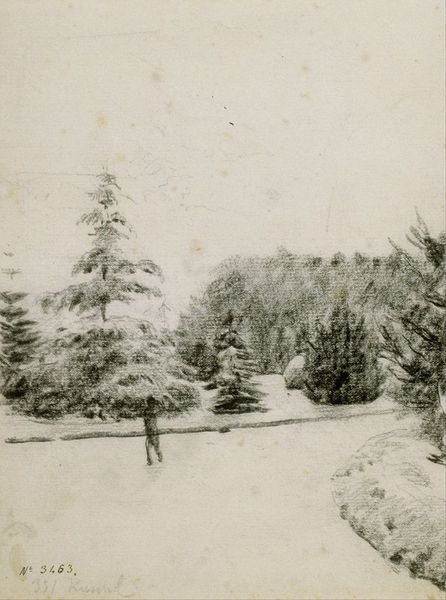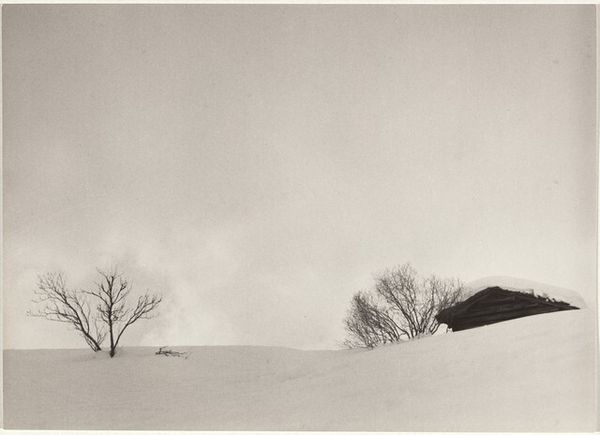
print, photography, gelatin-silver-print
#
black and white photography
# print
#
countryside
#
landscape
#
photography
#
outdoor loving
#
outdoor scenery
#
low atmospheric-weather contrast
#
nature friendly
#
gelatin-silver-print
#
monochrome photography
#
nature environment
#
outdoor activity
#
monochrome
#
shadow overcast
Dimensions: sheet (trimmed to image): 5.8 x 5.5 cm (2 5/16 x 2 3/16 in.)
Copyright: National Gallery of Art: CC0 1.0
Editor: So, this is Robert Frank’s “Trees in Snow—Landscape,” a gelatin-silver print from between 1941 and 1945. I’m immediately struck by how the stark monochrome emphasizes the texture of the snow and the bare trees. It almost feels like a study in contrasts. What compositional elements stand out to you? Curator: Note the composition; it relies heavily on a diagonal line formed by the snow-covered slope. The bare trees, silhouetted against the pale sky, function as vertical counterpoints to this dominant angle. How does this stark, almost brutal simplicity inform the overall effect? Editor: It's interesting you call it brutal. I see simplicity, definitely, but more peaceful than brutal. I'm wondering about the lack of a clear focal point, it seems to keep the eye moving? Curator: Precisely. The absence of a central subject encourages a more distributed reading of the picture plane. Your eye moves across the surface, attending to the varying tones and textures. The composition subverts the traditional landscape photograph’s desire for a strong, hierarchical arrangement. Observe how the gradation of tones creates depth despite the monochrome palette. What does that tell you about Frank’s skill? Editor: It’s a testament to his masterful control of light and shadow, even without color. He's using a limited palette to convey a complex sense of space and atmosphere. This almost feels more abstract than representational. Curator: The reduction of the scene to its essential formal components — line, tone, texture — approaches abstraction, doesn't it? Consider how this strategy prompts us to engage with the photograph not merely as a depiction of a landscape, but as a carefully constructed arrangement of visual elements. Editor: I see it now. By removing distractions and focusing on form, Frank invites us to appreciate the inherent beauty and tension in the bare landscape. I initially saw it as peaceful but understand now that it's more complicated and has to do with the stark arrangement. Thank you! Curator: My pleasure. It is these elements of compositional structure that allow us further clarity when experiencing the artwork.
Comments
No comments
Be the first to comment and join the conversation on the ultimate creative platform.
